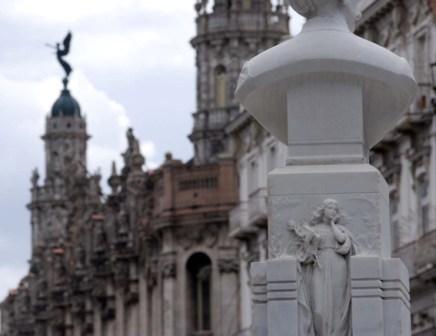Law and Popular Participation (1)
By Dimitri Prieto

That’s the name of a gathering I participated in recently; an international workshop organized by the Radar collective from Mexico, together with other organizations* from that country. The event took place in Havana, at the locale of the Havana International Film Festival which was very cordially placed at the disposition of the organizers thanks to the mediation of Alfredo Guevara.
Although there were no Cuban entities among the organizers, various well-known members of the Cuban bar attended: professors, lawyers, People’s Power delegates, and even a Chief Justice of Cuba’s Supreme Court and an ex-Minister of Justice. Several writers from the Cuban critical-Marxist tendency also went, including Fernando Martinez Heredia and Aurelio Alonso.
Law and popular participation. A hot topic in Cuba (and also – perhaps at a different level of intensity – in almost all countries – correct?). The first day of the gathering they talked about how the body of law regulates the political participation of citizens in the local environments. There were speakers on the struggle against dam construction in Mexico and on the functioning of the communal councils in Venezuela.
As for Cuba, much was said about how the Municipal Assemblies depend upon their superior instances for the realization of local projects, since – despite new possibilities – municipalities in Cuba still don’t enjoy real autonomy.
The Assembly delegates operate somewhat like advocates or lobbyists, attempting to solicit resources from state-run companies based in their territories or from other institutions, without real possibilities of acquiring their own funds and constructing a budget sufficient to tackle local problems. The Cuban Constitution theoretically permits the resolution of this question but no political decision has been made at a central level with respect to this.
That’s because the actual Cuban Constitution, approved in its initial variation in 1976, occupies a middle ground in the continent’s revolutionary juridical history.
Let me explain further: before the inception of the Cuban process of revolutionary change in 1959, the Latin American revolutions tended to produce constitutions of the style that later became known as “Welfare State” (without implying that they actually achieved such welfare). In other words, a model of a capitalist state (with the accustomed tripartite division of powers, two houses of Parliament, civil liberties, municipal autonomies) supplemented with guarantees and social institutions.
One model of such texts is the 1917 Mexican Constitution, the first in the world to establish economic and social rights, and also the Cuban Constitution of 1940. In contrast, the 1976 Socialist Constitution of Cuba established a State with unified power under the leadership of the Communist Party.
But the 1979 Nicaraguan revolution for the first time generated a radical constitution where more than three independent powers were set up and where no party leadership was pre-established in the text. Instead, it maintained the guarantees of civil liberty, municipal autonomy and political pluralism.

In this sense the constitution currently in force in Cuba occupies a middle ground between both models, without being exactly like either one. It occurred because of the enormous influence of the COMECON-style political designs, originally imported from Stalin’s USSR (especially from the 1936 “Stalinist”- Soviet constitution). However, a kind of “native” pro-State mentality emerging in Cuba since the (unfinished) 1933 people’s revolution obviously stimulated acceptance of such designs during the first 20 years of the post-1959 political process.
It’s interesting that today in Cuba the academic media discusses whether it’s more appropriate to say “socialism of the twenty-first century” or “socialism in the twenty-first century.” There’s a big difference, since the first term emphasizes the rupture with the models of the twentieth century, and the second the continuity.
For this reason, during the event “Law and popular participation” the Cuban sociologist and economist Aurelio Alonso affirmed that Cuba needs not only a constitutional reform but also a real transition from twentieth century socialism to that of the twenty-first century. This would signify a real and definitive renunciation of the European Soviet-style bureaucratic totalitarian model and a more profound communion with that which is occurring in the Latin American countries.
More popular participation and perhaps a more productive and efficient economy would be another facet. The idea of Aurelio Alonso seemed consistent to me. When I got home following the event, I telephoned a friend who is also a specialist in Political Science. I commented on the point made by Aurelio Alonso and I said, “It seems quite radical to me..” “Do you really think so? It doesn’t seem so to me. I think it’s more of the same,” my friend answered. To be continued…
*The Academy of Law and Human Rights and the Autonomous University of Mexico City. The workshop was held on August 31 and September 1, 2009
